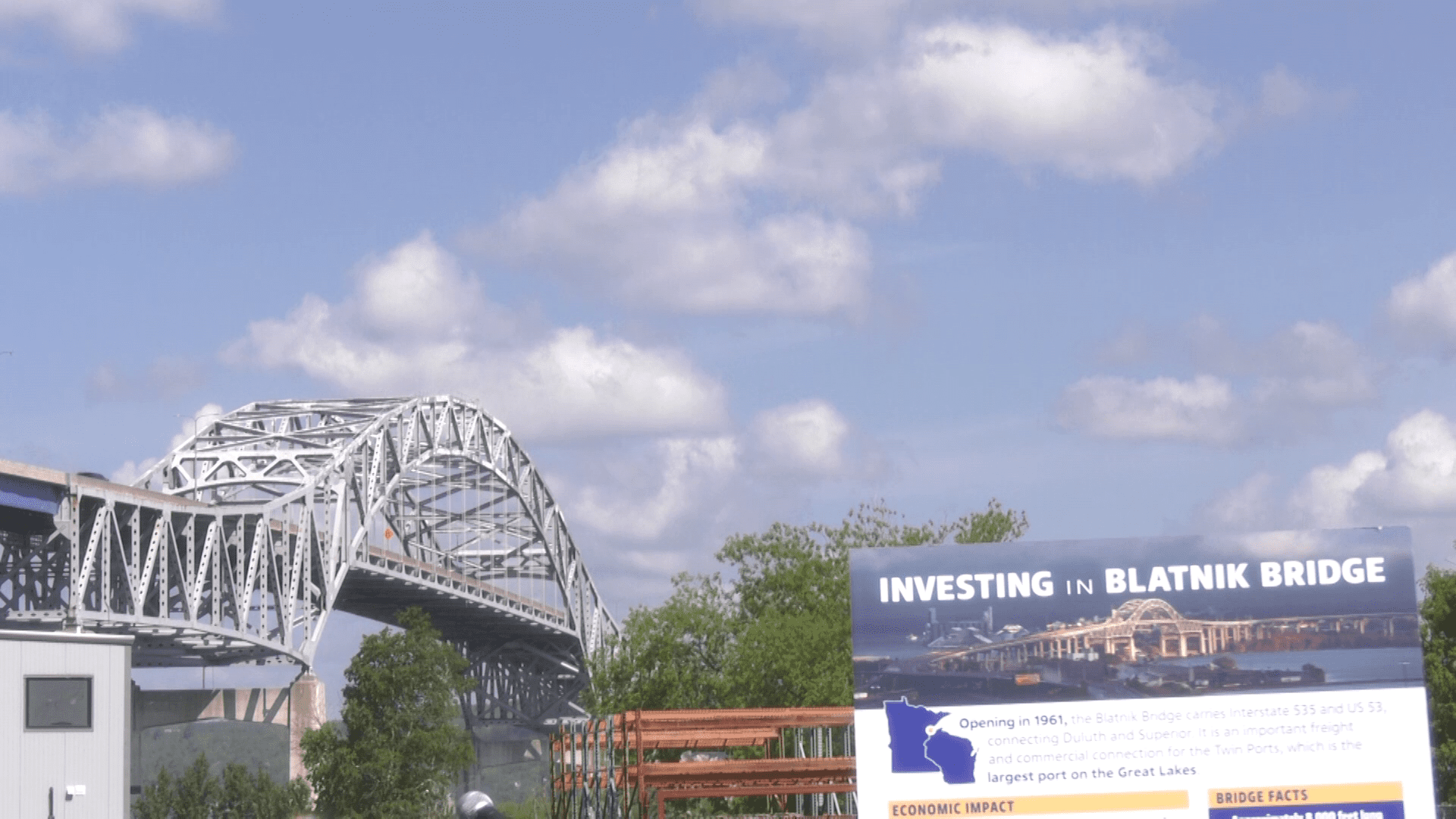Gov. Evers, Gov. Walz apply for grant to rebuild critical Duluth-Superior Bridge

(WDIO)
Governor Tony Evers and Governor Tim Walz together have announced their request for federal funding to help rebuild the Blatnik Bridge between Superior and Duluth. More than $1 billion is available through the federal Multimodal Project Discretionary Grant program, which is part of the Bipartisan Infrastructure Law (BIL).
“This project is an effort that’s been years in the works, and in partnership with Minnesota, our departments of transportation are ready to take advantage of this federal funding to make the investments needed to see this project over the finish line,” said Gov. Evers. “The updated Blatnik Bridge will foster regional economic growth, bolster our national supply chains, and strengthen the reliability of the transportation network that serves hundreds of communities. We look forward to continuing our work with our federal partners and the folks in Minnesota to build the 21st-century infrastructure our states need to grow and succeed.”
“The Blatnik Bridge connects the Twin Ports communities and economies of Duluth and Superior—it provides a vital route for regional commerce, tourism, and emergency services,” said Gov. Walz. “I’m proud to partner with Wisconsin Governor Tony Evers and our colleagues at the Wisconsin Department of Transportation to rebuild and modernize this critical piece of infrastructure as quickly as possible.”
The Blatnik Bridge has been open to interstate travel since 1961 and has been a critical link between Superior and Duluth. The bridge is co-owned and taken care of by the Wisconsin Department of Transportation WisDOT) and the Minnesota Department of Transportation (MnDOT). The bridge has had significant structural deterioration, resulting in load restrictions and an anticipated closure in 2030.
“The Blatnik Bridge is overdue for an upgrade, and we are ready to act and no longer rely on regular maintenance efforts,” said WisDOT Secretary Craig Thompson. “This federal funding will reinforce our commitment to invest in the existing infrastructure and rebuild this important route between our two states. Local residents and businesses rely on the Blatnik Bridge every day and any closures or traffic delays for maintenance work directly impacts their livelihood. Together with MnDOT, our improvements will provide a safe crossing to benefit transportation for decades to come.”
Each state recently committed $400 million and plans to seek additional federal funds through other sources, including other discretionary grants, to get the project over the finish line.
“The Blatnik Bridge is rated as Minnesota’s highest risk for service disruption and replacing the bridge prior to 2030 is a top priority,” said MnDOT Commissioner Nancy Daubenberger. “A new Blatnik Bridge will improve travel reliability and freight access, reduce greenhouse gas emissions, and provide good-paying jobs for local residents. MnDOT is grateful to our federal partners for their consideration and look forward to working with our partners at WisDOT to build the modern and reliable Blatnik Bridge that the Twin Ports deserves.”
Senator Amy Klobuchar announced her support of Minnesota and Wisconsin’s application for Bipartisan Infrastructure Law funding to rebuild the Blatnik Bridge. President Biden visited the Blatnik Bridge in 2022 with Senator Klobuchar to discuss how the bridge could benefit from the Bipartisan Infrastructure Law.
“The Blatnik Bridge has been around for over sixty years and is in serious need of repairs” said Senator Klobuchar. “This bridge is critical to the regional economy and keeps our communities connected, which is why I am calling on the Administration to grant Minnesota and Wisconsin’s funding application to replace the bridge.”
Earlier this month, Klobuchar sent letters to Secretary Buttigieg in support of Minnesota Department of Transportation (MnDOT)’s applications for funding through the U.S. Department of Transportation National Infrastructure Project Assistance Program and its Infrastructure for Rebuilding America (INFRA) Program.
MnDOT and WisDOT have been working on this project since 2020 and plan to reveal the recommended alternative for replacing the 8,000-foot structure in October.
The federal BIL funding will be allocated to a substantial portion of the project’s budget and streamline scheduling. Design work for the project, which would determine specifications and shape the total cost of the project, is anticipated to begin in 2024. Once a final design is selected, construction is planned to begin in 2027 if full funding is secured.